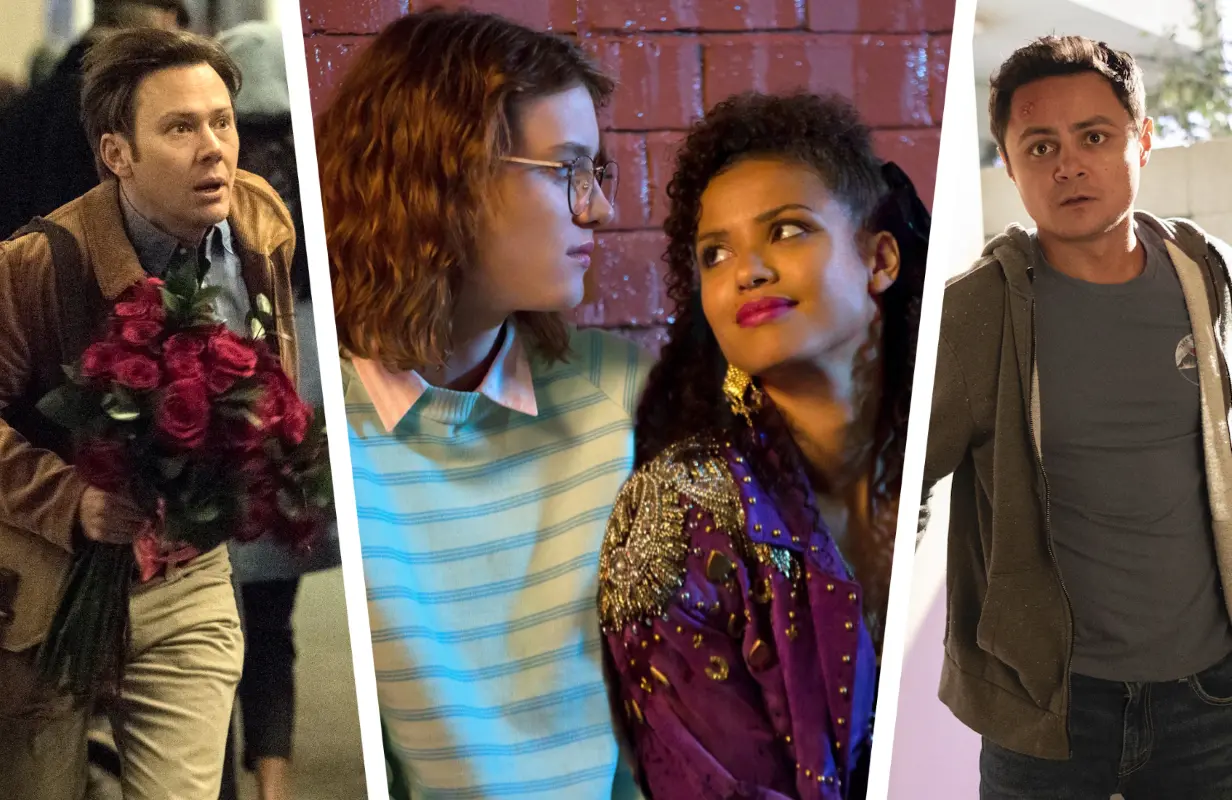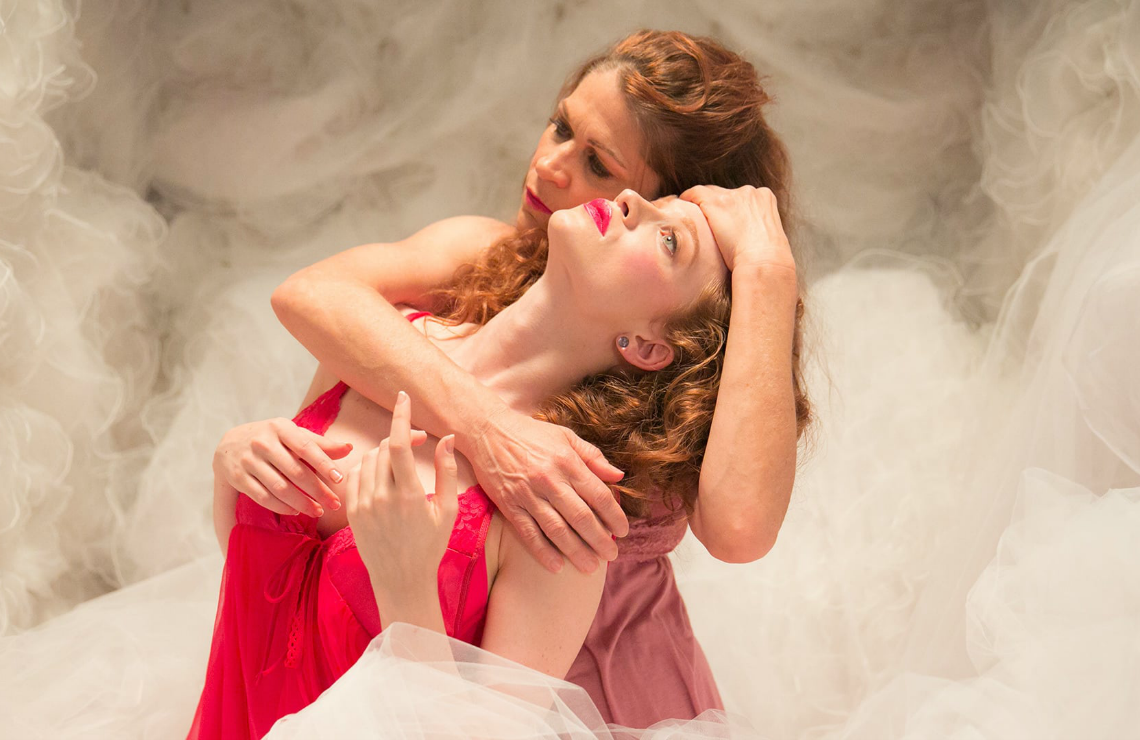Once Dead, TV Anthologies Are Enjoying a New Golden Age
-
 Jimmi Simpson in The Twilight Zone (2019), Gugu Mbatha-Raw & Mackenzie Davis in Black Mirror, and Arturo Castro in Room 104 (Photos: CBS All Access/Netflix/HBO)
Jimmi Simpson in The Twilight Zone (2019), Gugu Mbatha-Raw & Mackenzie Davis in Black Mirror, and Arturo Castro in Room 104 (Photos: CBS All Access/Netflix/HBO)Until recently, modern TV viewers could be forgiven for not even knowing what an anthology TV series is. Rather than telling ongoing serialized or procedural stories, anthology shows tell self-contained stories within a single episode, or — in some cases — single seasons. The individual episodes or seasons aren’t connected by characters or stories as much as by the show’s specific brand of storytelling. As a result, they have the ability to tell dozens of stories, all while existing under the banner of just one show.
In TV’s first golden age, TV anthologies were fairly commonplace. There were classics like The Twilight Zone, Alfred Hitchcock Presents, or The Outer Limits, but there were also largely forgotten titles like Four Star Playhouse and Climax!. Early on, the format provided creators a framework to experiment with the still new medium of television, sometimes in exciting and provocative ways, but as time went on, the shows being produced began to feel more and more formulaic.
Eventually TV anthologies gave way almost entirely to the traditional half-hour sitcom and hour-long drama, apart from the occasional Twilight Zone homage, like Amazing Stories or Tales From the Crypt, That was, at least, until the age of Peak TV.

More than 60 years after The Twilight Zone premiered its first episode in 1959, there are once again multiple anthology shows on television, with many of the more modern titles playing with the form in ways that haven’t been seen since the initial boom of the 50s and 60s.
While it wasn't the first in the new wave of anthologies, there is one show that seemed to accelerate the trend. We are, of course, talking about Black Mirror. Purchased by Netflix in 2015, after airing its first 2 seasons on Channel 4 in the U.K., Black Mirror has become a pop culture phenomenon over the course of its 5 seasons. Using modern technological trends to tell often dystopian sci-fi stories, Black Mirror has produced some of the best standalone episodes of the century, and it didn’t take long for other networks and streaming services to notice. The result has been a slew of new TV anthologies, as well as revivals of beloved classics.

CBS All Access premiered its Jordan Peele-hosted Twilight Zone revival last year to generally positive reviews, while Apple TV+ premiered its less successful Amazing Stories revival just a few months ago. Elsewhere, HBO has had not just one, but two anthology TV shows on its roster in recent years. Room 104 has been telling consistently quirky, progressive stories, while High Maintenance and has offered several seasons of small, inventive TV stories (including one dialogue-free, dance-driven installment (pictured above) that remains one of this writer’s favorite TV episodes of the past five years).
This new anthology wave isn't just made up of Twilight Zone homages. There are a variety of shows using the format in ways that feel more diverse than any of the shows in the 50s and 60s ever did. For every straightforward series The Romanoffs there’s a zanier alternative like Netflix’s Love, Death, & Robots, which offered viewers almost 20 animated short stories in its first season, created by artists from all over the world. Whats more, there are now anthology shows in basically every genre, whether it be horror (Channel Zero), romance (Modern Love), or comedy (High Maintenance).
Then there's TV’s more recent, season-long take on the anthology structure, seen in shows like True Detective, Fargo, The Sinner, The Terror, Castle Rock, and American Horror Story.Unlike the episodic anthologies mentioned above, tell standalone stories over the course of a single season rather than in single episodes, with each season focusing on a different story and an entirely new cast of characters. When successful, they can tell the same kind of dense, self-contained stories found in a traditional TV miniseries, while providing a kind of season-to-season variety inspired by the traditional anthology format.

Today CBS All Access is premiering the second season of its Twilight Zone revival, with even more recognizable stars and behind-the-scenes talent involved than in the show's ambitious first season. At a time when millions of people around the world are consuming television on more screens and from more sources than ever, it’s exciting to see the anthology return with such vigor. Once again, some of the medium's finest creators and producers can experiment with the very way TV stories are told.
All ten Season 2 episodes of Jordan Peele's The Twilight Zone reboot drop today on CBS All Access.
People are talking about The Twlight Zone (2019) in our forums. Join the conversation.
Alex Welch has written about television and film for TV by the Numbers, IGN, The Berrics, Paste Magazine, Screen Rant and GeekNation. Follow him on Twitter @alexrwelch.
TOPICS: The Twilight Zone (2019 series), CBS All Access, Amazing Stories, Black Mirror, Castle Rock, Fargo, Love, Death & Robots, Love Life, Modern Love, Room 104, The Terror, True Detective, The Twilight Zone (1959 series), American Horror Story Franchise